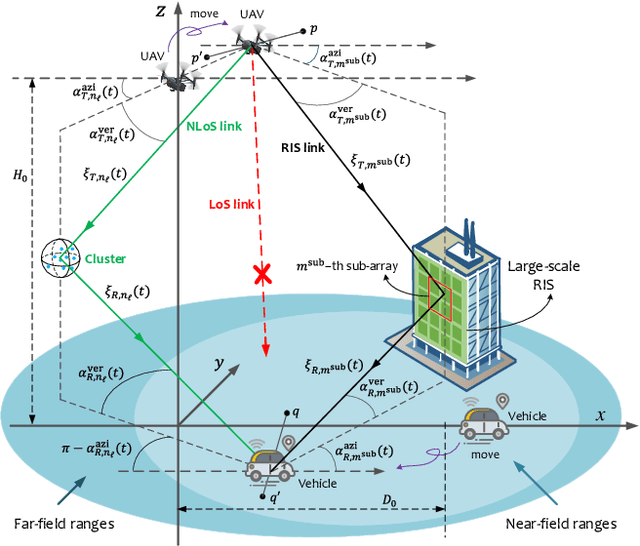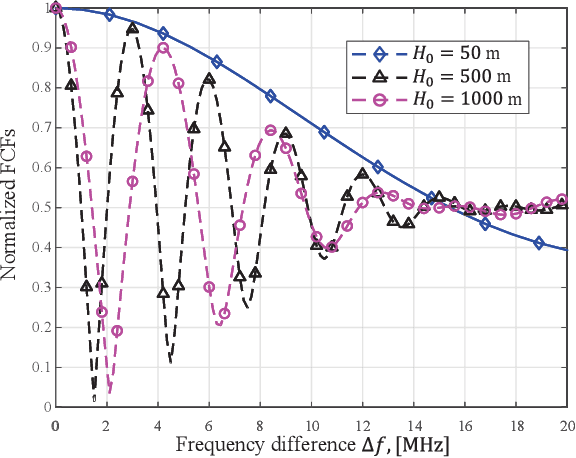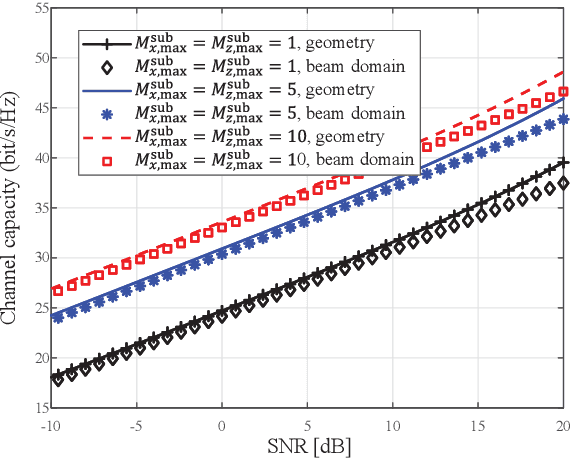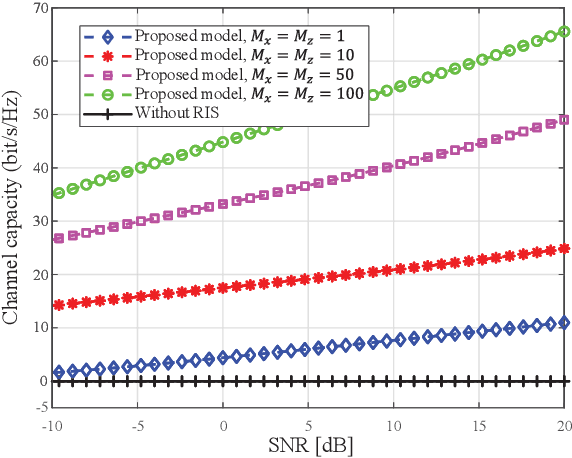Large-Scale RIS Enabled Air-Ground Channels: Near-Field Modeling and Analysis
Paper and Code
Mar 19, 2024



Existing works mainly rely on the far-field planar-wave-based channel model to assess the performance of reconfigurable intelligent surface (RIS)-enabled wireless communication systems. However, when the transmitter and receiver are in near-field ranges, this will result in relatively low computing accuracy. To tackle this challenge, we initially develop an analytical framework for sub-array partitioning. This framework divides the large-scale RIS array into multiple sub-arrays, effectively reducing modeling complexity while maintaining acceptable accuracy. Then, we develop a beam domain channel model based on the proposed sub-array partition framework for large-scale RIS-enabled UAV-to-vehicle communication systems, which can be used to efficiently capture the sparse features in RIS-enabled UAV-to-vehicle channels in both near-field and far-field ranges. Furthermore, some important propagation characteristics of the proposed channel model, including the spatial cross-correlation functions (CCFs), temporal auto-correlation functions (ACFs), frequency correlation functions (CFs), and channel capacities with respect to the different physical features of the RIS and non-stationary properties of the channel model are derived and analyzed. Finally, simulation results are provided to demonstrate that the proposed framework is helpful to achieve a good tradeoff between model complexity and accuracy for investigating the channel propagation characteristics, and therefore providing highly-efficient communications in RIS-enabled UAV-to-vehicle wireless networks.
 Add to Chrome
Add to Chrome Add to Firefox
Add to Firefox Add to Edge
Add to Edge